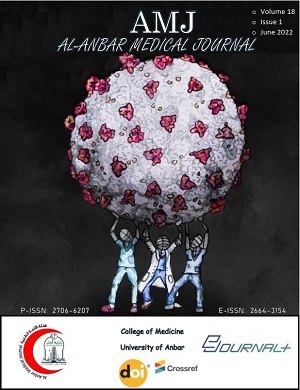Document Type : Original articles
Authors
1 Department of Surgery (Otolaryngology), College of Medicine, Al-Mustansiriya University, Baghdad, Iraq.
2 Department of Surgery (Otolaryngology), Baqubah Teaching Hospital, Diala Health Directorate, Diala, Iraq
3 Department of Surgery (Otolaryngology), Baqubah Teaching Hospital, Diala Health Directorate, Diala, Iraq.
Abstract
Background: Unilateral mass in the sinonasal region is a common problem facing the otolaryngologist in daily clinical practice. There are various benign and malignant conditions originating in this area with different clinical features depending on their nature and extent.
Objectives: To evaluate the types and clinical profile of unilateral sinonasal masses.
Materials and methods: This study includes 60 patients who attended the outpatient clinic at Alyarmook Teaching Hospital, Baghdad, Iraq, between January 2017 and April 2018. A thourough history from each patient was taken. Moreover, the clinical examination was done according to standard clinical practice. The imaging results of the nose and paranasal sinuses were documented. Then biopsy was taken from the mass at the operating room under local or general anesthesia if indicated. The specimen was sent for histopathological examination and the results were documented on the data collection sheet. The patients were divided into two groups: non-neoplastic and neoplastic according to the histopathological results.
Results: Out of 60 patients, there were 36 (60%) males. The age of our cases was ranged from 6 to 79 years with a mean age of 34.20 ± 18.126 years. Non-neoplastic causes were (n=38, 63.3%) more than the neoplastic group, and the majority of them were unilateral simple polyp (n=23, 38.3%). Inverted papilloma was the most common benign tumor (n=8, 13.3%), while, squamous cell carcinoma was the commonest malignant neoplasm (n=2, 3.3%). Non-neoplastic causes were more in both sexes. The most affected age group was 20-49 years (n=31, 51.7%). The non-neoplastic causes were mostly seen in the age group 20-49 years (n=22, 36.7%). There was no statistically significant difference between the age and gender and the causes of unilateral sinonasal lesions (P-value > 0.05). Nasal obstruction, nasal discharge, and hyposmia were more in non-neoplastic than neoplastic group. While epistaxis and facial pain were found to be higher in the neoplastic group.
Conclusion: Non-neoplastic masses outnumber neoplastic ones. Among non-neoplastic lesions, inflammatory polyps were the most common. Benign neoplasms outnumber the malignant neoplasms with inverted papilloma and squamous cell carcinoma were the most common respectively.
Keywords
Main Subjects

